Some would say the Pixel 7 series is how Android 13 is meant to be experienced. Others would argue that it’s even better, thanks to the Pixel exclusive features and the promise of new ones to come with future Pixel Feature Drops. Others still would point to the headaches that previous Pixel generations have caused their users.
Where do you stand on this topic – will you be picking up one of the Pixel 7 models or will you look elsewhere for your next phone?
![]()
![]()
Google Pixel 7 • Pixel 7 Pro
First things first, the phones cost the same as last year $600/€650/£600 for the small one and $900/€900/£850 for the larger, more capable model. That always felt like a phone-sized gap and it still does, especially considering that Google has still denied the small phone certain upgrades like a 120Hz display.
Yes, the Pixel 7 still comes with a 90Hz FHD+ panel, slightly smaller this time – 6.3” (down from 6.4”). It’s rare for phones to go smaller in this day and age, but indeed the Pixel 7 is slightly shorter, narrower and thinner than its predecessor, a bit lighter too. It’s far from “small”, but it is definitely “smaller”.
![]()
![]()
![]()
![]()
Google Pixel 7
This also comes with a smaller battery (4,355mAh vs. 4,614mAh), but efficiency improvements have stretched out battery life. The rest is mostly the same, save for the new selfie camera (10.8MP now, wider lens but still fixed focus). This means no dedicated telephoto lens, just Super Res Zoom using the 50MP main sensor (1/1.31”, 1.2µm pixels, f/1.85 lens with 82° FoV).
The Pixel 7 Pro did get an upgrade to its telephoto lens, which now has 5x optical magnification (up from 4x), although the new 48MP sensor has slightly smaller pixels than the old one (0.7µm vs. 0.8µm).
![]()
![]()
![]()
![]()
Google Pixel 7 Pro
Aside from that, the advantages of the Pro this year are carried over from last year’s model. This means a sharper 6.7” QHD+ display with 120Hz refresh rate, 12GB of RAM (instead of 8GB), larger 5,000mAh battery and the aforementioned tele lens.
Both 7-series models bring Google’s second smartphone chipset, the Tensor G2. Google isn’t a gaming company (sorry, Stadia fans), so raw performance is not important – machine learning, image processing and security are the main selling points of the G2 (the Titan M2 security chip too). And indeed those are the main selling points the Pixel 7 and 7 Pro themselves.
At $600/€650, the Pixel 7 is well below the price of small phones with pure Android – the Zenfone 9 (€800), never mind the Xperia 5 IV (€1,050). For a bit more ($650/€730) you can get a OnePlus 10T, though it’s larger and doesn’t focus on the camera as much. It is available in the US and Canada, where options are more limited than in Europe and Asia.
If software longevity is the main concern, Samsung tops even Google in terms of support. Something like a Galaxy S21 FE (€630) will get 4 OS updates and 5 years of patches (it did start with Android 12, though). And you even get a 3x telephoto lens, plus a 120Hz display.
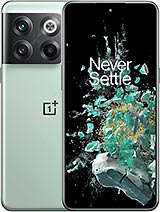

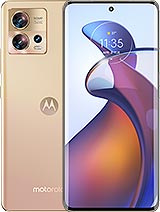

OnePlus 10T • Samsung Galaxy S21 FE 5G • Motorola Edge 30 Fusion • Xiaomi 12T
A Motorola Edge 30 Fusion (€600) flaunts a 144Hz P-OLED display (6.55”, FHD+) and is powered by a Snapdragon 888+. Unfortunately, Motorola doesn’t make the same commitment of 3 OS updates as with the Edge 30 Ultra, so you only get 2 (starting with Android 12, which isn’t ideal). You get a 50MP (1/1.55”) main camera with OIS, 13MP ultra wide (no tele) and 32MP selfie cameras, plus a mostly stock interface.
A Xiaomi 12T (€600) does come in with a 108MP main camera and even a 1220p-class display, compared vs. 1080p for the 10T. Both are 120Hz panels, though. Also both offer blazing fast charging (120W for the Xiaomi, 150W for the OnePlus). However, the 12T runs MIUI, take it or leave it.
Time to vote – who is buying a Pixel 7? You can cast your vote below or (if that doesn’t work) try on this page.
Now let’s rustle up some competition for the Pixel 7 Pro. Starting at €900 makes that easier, so even though it’s more capable than its smaller sibling, the Pro won’t have it easy.
A Samsung Galaxy S22+ is slightly more expensive and it is not quite a match for the Pixel in terms of camera. Its 50MP main sensor is smaller (1/1.56” vs. 1/1.31”) and the 3x telephoto camera offers less magnification and less resolution (10MP). The S22 Ultra has better specs but even more expensive, but it does pack a 108MP main camera, two 10MP tele lenses (one 3x and one 10x), not to mention the S Pen stylus.
Speaking of cameras, 200MP is the new hotness with the likes of the €900 Motorola Edge 30 Ultra. This one pushes its P-OLED display to 144Hz and has the powerful Snapdragon 8+ Gen 1 to back it up (the S22 phones have the original 8 Gen 1, if you’re lucky). Also, there is a 200MP main camera (1/1.22” sensor with up to 16-in-1 binning), an okay 2x portrait camera and a 50MP main cam. The 4,610mAh battery charges at 125W (or at 50W wirelessly). Also, Motorola has committed to 3 OS updates, as many as the Pixel.

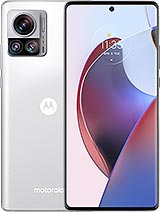
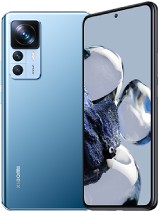
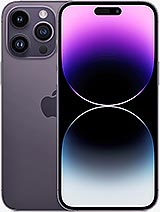
Samsung Galaxy S22+ 5G • Motorola Edge 30 Ultra • Xiaomi 12T Pro • Apple iPhone 14 Pro Max
The other 200MP option is the Xiaomi 12T Pro. It also runs on the 8+ Gen 1 chipset and has a high-quality 12-bit AMOLED display with 120Hz refresh rate. And it is a 1220p-class display, not 1080p like the Motorola. However, other than the impressive 200MP sensor, the other cameras on the 12T Pro are nothing to write home about. At least this phone matches the Pixel at 5,000mAh battery capacity and beats in on charging speed (120W, 0-100% in 19 minutes). But you better be okay with MIUI.
At $1,100 the iPhone 14 Pro Max is noticeably more expensive than the Pixel 7 Pro, but we felt we had to mention it as an alternative. It is the dominant smartphone in the US, after all, with even better software support than the Pixel and what may be the best chipset on the market overall. For the first time it has a taste of a high resolution camera – 48MP, but this is still a big change after years of 12MP sensors.
Let’s have a show of hands – who is buying the Pixel 7 Pro? Tell us in the poll below or cast your vote here.
Author: Peter
Source: GSMArena



